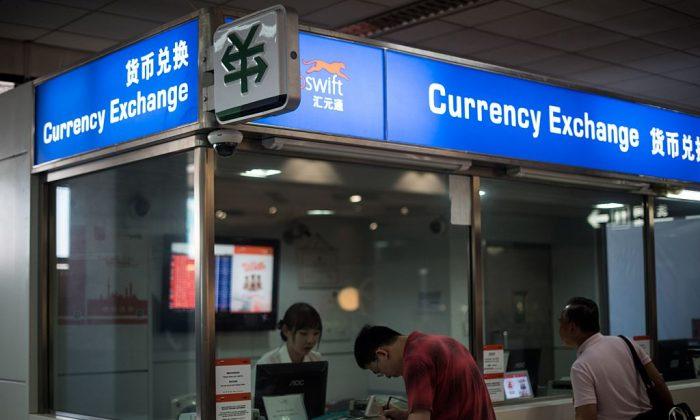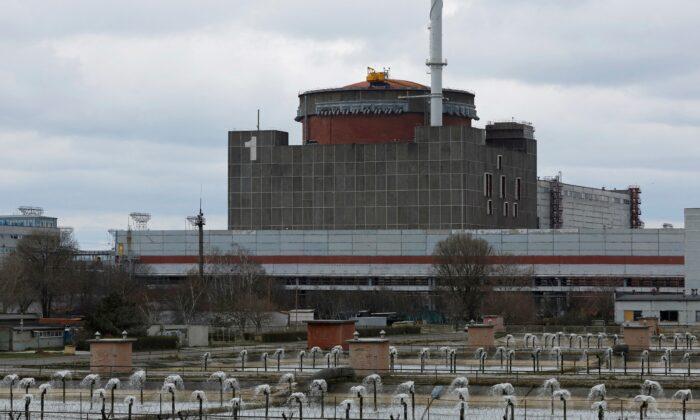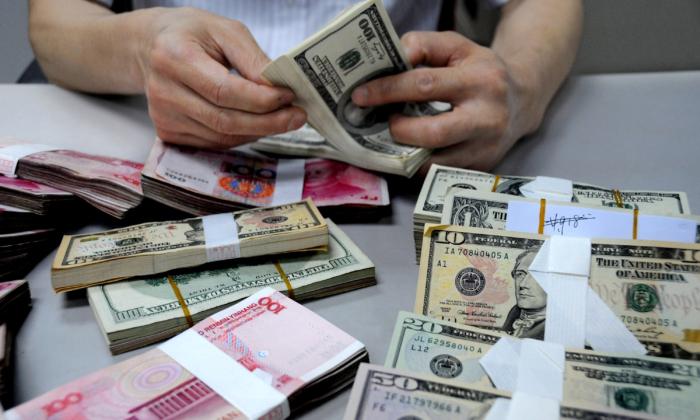On the same day China released economic data for January and February, the People’s Bank of China (PBOC) announced a 0.25 percentage point cut to the reserve requirement ratio (RRR) for almost all banks. This move is expected to release approximately 500 billion yuan (about $75 billion) in long-term funds.
However, a financial expert believes that such a massive cash injection can only make economic data look good, but it is detrimental to economic development.
China’s Ministry of Finance released data on March 17 showing that domestic demand in China continued to decline in the first two months of 2023, with falling household incomes and a sluggish real estate market. Moreover, the scale of government debt continued to expand, as tax revenues in several major categories experienced significant declines compared to the same period last year.
In particular, consumption tax saw a year-on-year decline of 18.4 percent, while revenue from the transfer of state-owned land use rights decreased by 29 percent compared to the same period last year. Meanwhile, in the government’s general public budget expenditure, debt interest payments rose 27.3 percent year on year.
Liquidity Injection
On March 17, the PBOC announced its first RRR cut for 2023. Except for those banks that have implemented a 5 percent reserve ratio, RRR for all other banks will be reduced by 25 basis points, effective March 27.Albert Song, a researcher at Tianjun Policy and Economic Research, told The Epoch Times on March 20: “In January and February, the year-on-year growth rate of the broad money supply [M2] exceeded 12 percent for two consecutive months. With such rapid growth in the money supply, further reducing the reserve requirement to release liquidity is like ‘flooding the market’ with cash.”
Car Sales Slump
To stimulate automobile sales, several local governments in China have continued or increased their subsidies for car buyers in 2023. For example, Yuncheng city in Shanxi Province began offering subsidies on Jan. 1, while Jiangshan city in Zhejiang Province started issuing a total of 10 million yuan (about $1.5 million) in car purchase vouchers on March 6, with buyers receiving up to 8,000 yuan (about $1,200) in subsidies.Beijing continued its car replacement subsidies introduced in 2022, offering eligible recipients 8,000 or 10,000 yuan (about $1,500) in subsidies. On Feb. 28, the city launched the “2023 Beijing Consumption Season” campaign, featuring promotional activities from over 1,000 companies, including car sales promotions.
At the same time, the Chinese automobile makers have begun a price war since the beginning of 2023. Tesla announced a price cut on Jan. 6, followed by Xpeng Motors on Jan. 17. Chinese carmaker Seres and Huawei also announced price reductions for their jointly-designed Aito M5 vehicles. NIO’s announcement came on Feb. 1, with the highest discount exceeding 100,000 yuan (about $15,000).

According to sales data released by the Market Research Branch of the China Automobile Dealers Association (CADA) for February, BYD Auto and Changan Automobile ranked first and second, respectively, in wholesale volume. In retail sales, BYD Auto maintained the top spot, and Changan Automobile ranked third. However, even the top-ranked BYD and Changan had to join others in the price reduction war in March.
The automobile industry is one of the pillars of China’s economy, with a vast industrial chain. Growth in automobile consumption is expected to stimulate economic growth. However, despite efforts to boost sales this year, vehicle purchase tax revenues fell by more than 30 percent in January and February.
Albert Song believes that relying on massive monetary easing and increasing infrastructure investment can only drive China’s economic data and is detrimental to the healthy development of the Chinese economy.
“This can lead to issues like funds circulating within the financial system without entering the real economy and, in turn, result in a shrinking real economy and expanded virtual economy. The main problem with the current economic situation is a lack of confidence in business, investment, and consumption, which needs urgent resolution,” Song said.
He further explained that when funds circulate within the banking system, seeking high-yield opportunities instead of flowing into the real economy, it will become more difficult for the real economy to borrow money, leading to increased funding costs.






